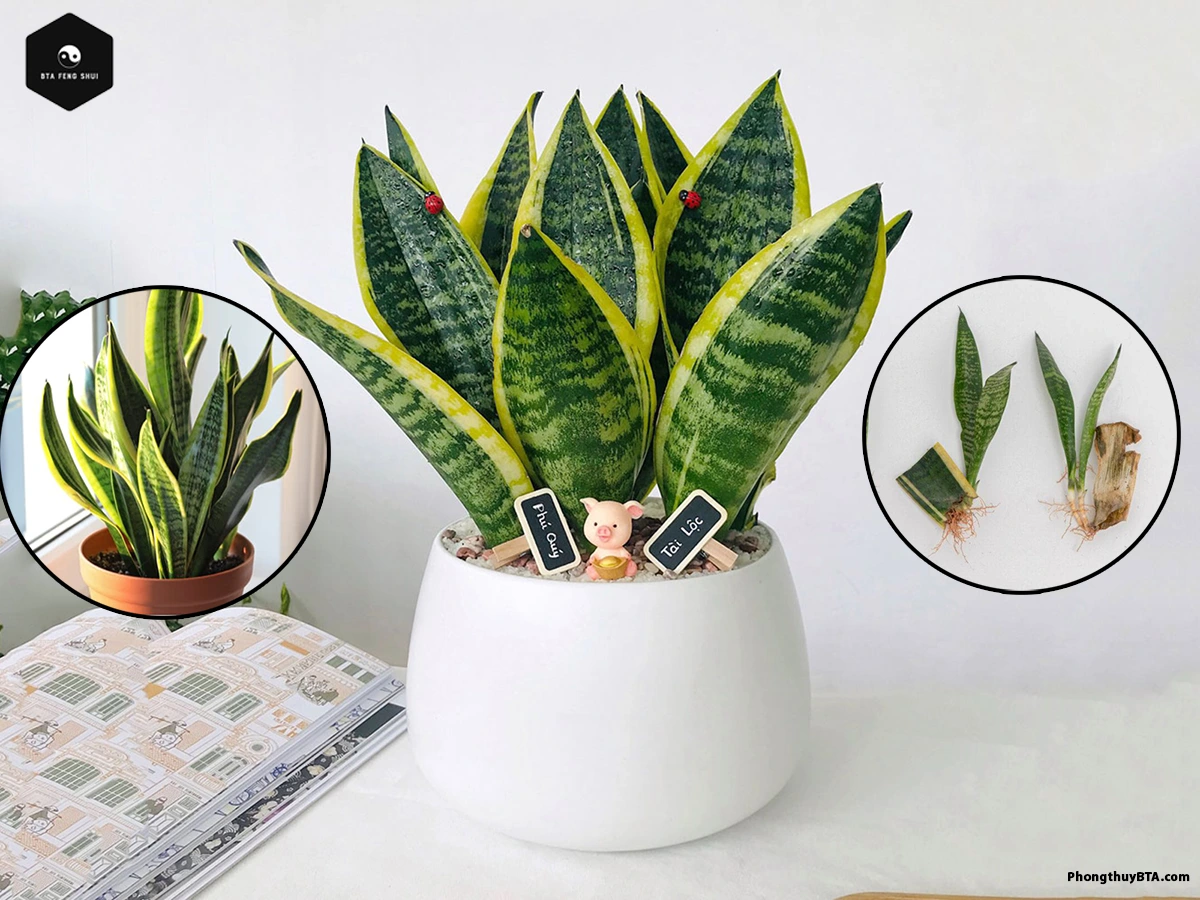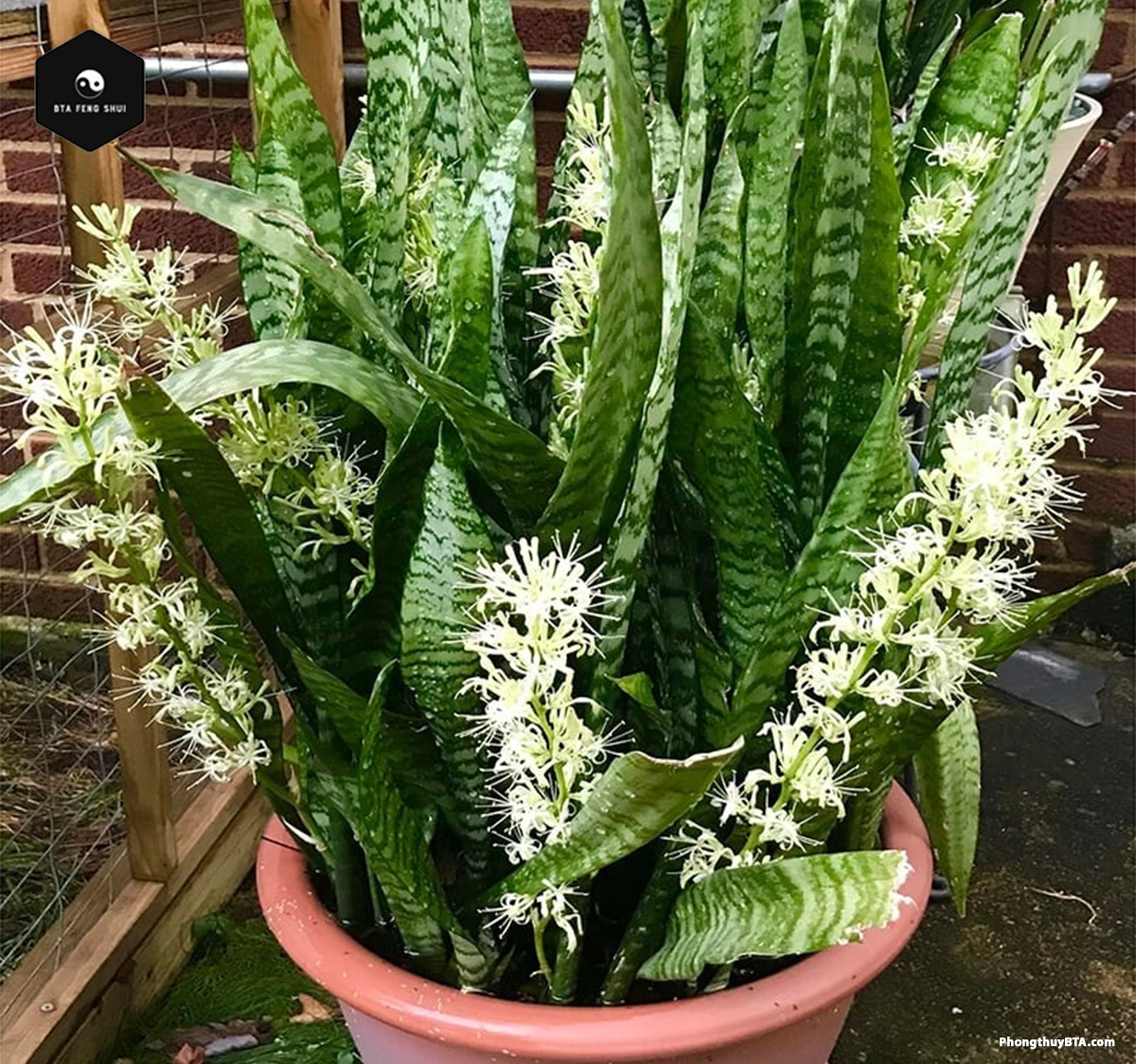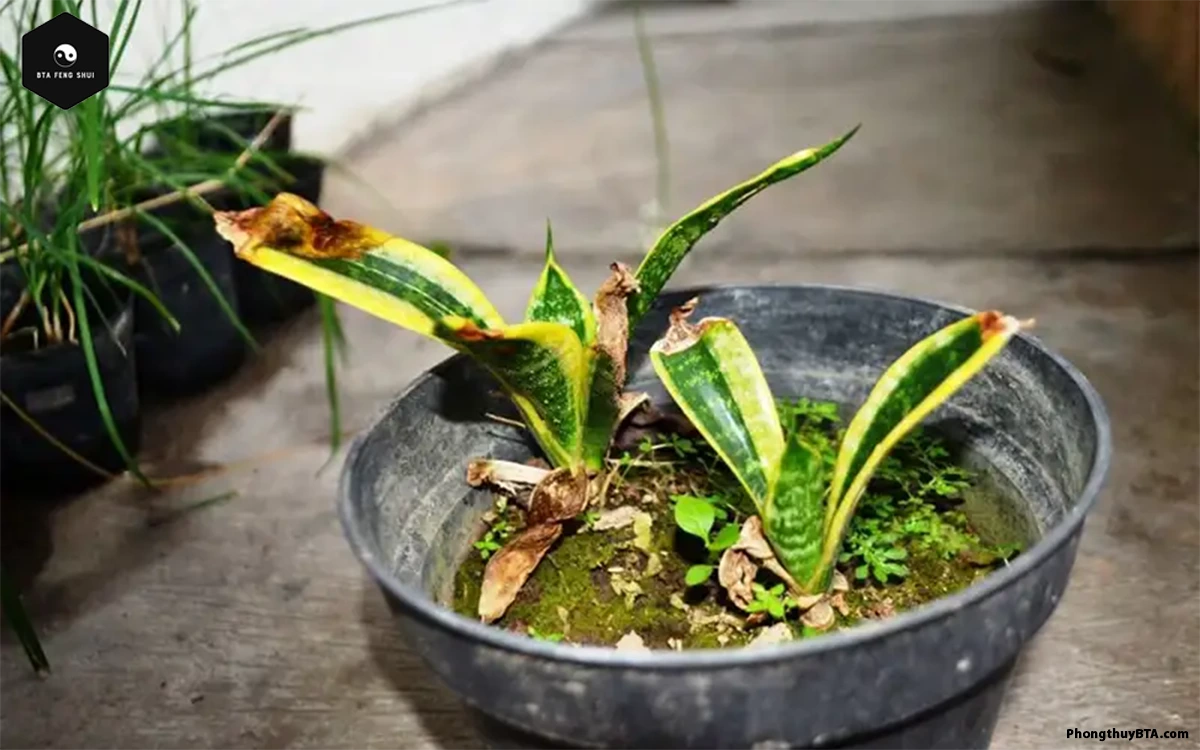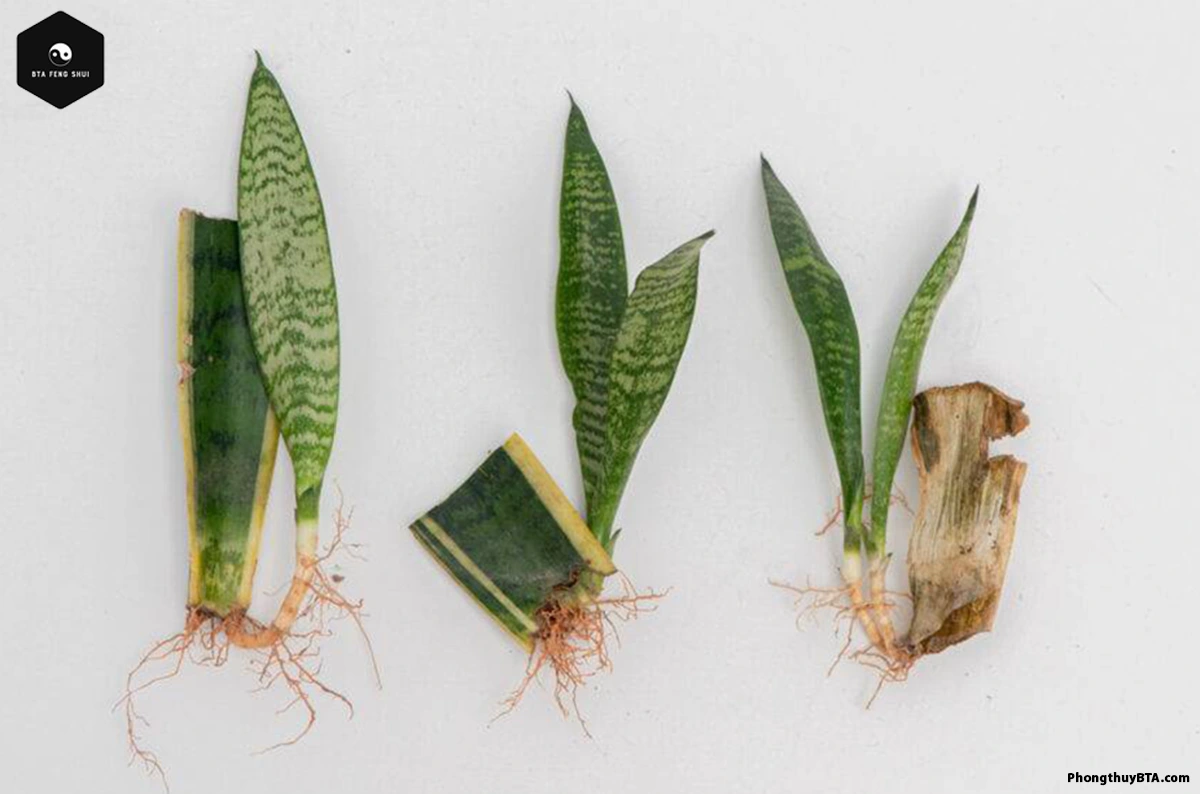The Snake plant, known as mother-in-law’s tongue or Sansevieria, is a resilient houseplant that blends striking aesthetics with powerful Feng Shui properties. Perfect for beginners, its low-maintenance nature and air-purifying qualities make it a favorite for homes and offices.
Dive into this guide to learn how to cultivate a thriving Snake plant while harnessing its spiritual energy to enhance prosperity and harmony in your space.
Exploring the Snake plant
The Snake plant (Dracaena trifasciata, formerly Sansevieria trifasciata) is an evergreen perennial native to West Africa, celebrated for its durability and elegant, upright leaves. Its versatility and unique appearance make it a staple in modern interiors.

Key Characteristics
| Attribute | Details |
|---|---|
| Common Names | Snake plant, mother-in-law’s tongue, viper’s bowstring hemp, serpent plant |
| Botanical Name | Dracaena trifasciata |
| Family | Asparagaceae |
| Plant Type | Evergreen perennial, typically grown as a houseplant |
| Mature Size | 2–5 ft. tall indoors |
| Native Area | West Africa |
| Toxicity | Mildly toxic to cats and dogs |
Appearance and Varieties
The Snake plant features long, sword-like leaves with green, yellow, or cream variegation, often displaying tiger-like stripes. Its structural form adds vertical interest to any space. Notable varieties include:
- Dracaena trifasciata ‘Laurentii’: Yellow-edged leaves for a vibrant look.
- Dracaena trifasciata ‘Hahnii’: Compact, rosette-shaped, ideal for small spaces.
- Dracaena angolensis: Cylindrical leaves with a unique arching form.
- Dracaena trifasciata ‘Bantel’s Sensation’: White-striped, narrow leaves reaching up to 3 feet.

Growth and Blooming
While slow-growing, Snake plants can reach 2–5 feet indoors, depending on care. They rarely bloom indoors but may produce fragrant, creamy-white flowers in ideal conditions, symbolizing luck in Feng Shui.

=> Read more:
- ZZ Plant Care: Your Guide to Growing a Feng Shui Powerhouse
- How to Grow and Care for Hydrangeas in Feng Shui Gardens
Feng Shui Power of Snake plants
In Feng Shui, the Snake plant is a guardian of positive energy, its upright leaves symbolizing strength and protection. It’s revered for warding off negative chi and fostering balance in living spaces.
Strategic Placement
- Entrance: Place near doorways to block negative energy and invite prosperity.
- Living Areas: Enhances harmony and vitality in communal spaces.
- Workspaces: Boosts focus and creativity, ideal for offices or studies.
- Southeast Corner: Aligns with the Wood element to attract wealth.

Zodiac and Element Compatibility:
The Snake plant’s green and yellow hues resonate with Earth and Metal elements, making it ideal for individuals born in years like 1966, 1978, or 1990 (e.g., Horse zodiac). Positioning it in the south or southeast enhances its Feng Shui benefits.
How to grow Snake plant
Starting a Snake plant is simple, whether from a nursery or propagated at home, making it perfect for Snake plant for beginners.
Choosing a Pot and Soil:
- Pot: Select a terracotta or ceramic pot with drainage holes, slightly larger than the root ball.
- Soil: Use a well-draining cactus or succulent mix to prevent water retention.

Planting Steps:
- Prepare the Pot: Fill with cactus soil, leaving space for the root ball.
- Position the Plant: Set the Snake plant at its original soil depth.
- Secure and Water: Fill gaps with soil, press gently, and water lightly.
- Placement: Position in bright, indirect light for optimal growth.
Outdoor Planting: For Snake plants outdoors (USDA zones 9–11), choose a shaded spot with well-drained soil and protect from frost.
Caring for Your Snake plant
Snake plant care is straightforward, ensuring long-lasting beauty with minimal effort.
Watering Snake plant
- Frequency: Water every 2–3 weeks when the top 2 inches of soil are dry; reduce to monthly in winter.
- Method: Water deeply, allowing excess to drain, and avoid waterlogged soil.
- Tip: Check for brittle leaves to gauge watering needs; yellow leaves signal overwatering.

Light Requirements
- Ideal: Bright, indirect light (e.g., near east- or south-facing windows).
- Flexibility: Tolerates low light but grows slower with less vibrant colors.
- Avoid: Harsh direct sun to prevent leaf scorching.
Temperature and Humidity
- Temperature: Keep between 70°F–90°F (21°C–32°C); avoid below 50°F (10°C).
- Humidity: Thrives in standard household humidity (30–50%); avoid high-humidity areas like bathrooms.
Fertilizing
- Apply a diluted 10-10-10 fertilizer twice yearly (spring and mid-summer).
- Skip fertilization in winter to respect dormancy.
Pruning and Maintenance
- Pruning: Trim tall or damaged leaves at the soil line in spring/summer using sterile shears.
- Cleaning: Wipe leaves monthly with a damp cloth to remove dust and enhance photosynthesis.
Repotting
- Frequency: Every 3–5 years or when roots crowd the pot.
- Steps:
- Gently remove the plant and clear old soil.
- Repot in a slightly larger pot with fresh cactus mix.
- Water sparingly and place in indirect light.
Protecting Snake plants from Pests and Diseases
While hardy, Snake plants can face issues if care is neglected.
Common Pests
- Fungus Gnats: Caused by wet soil. Reduce watering and use sticky traps.
- Spider Mites: Indicated by webbing or speckled leaves. Spray with neem oil.
- Mealybugs: White, fuzzy spots. Wipe with alcohol or apply neem oil.

Common Issues
- Root Rot: Foul soil odor or mushy roots. Repot with fresh soil, removing affected roots.
- Yellow Leaves: Often from overwatering or pests. Adjust watering and inspect for infestations.
- Curling or Drooping Leaves: May indicate thrips, underwatering, or poor light. Treat with neem oil, check soil, or move to brighter light.
Prevention Tips
- Maintain a consistent Snake plant watering schedule.
- Ensure proper drainage and avoid overwatering.
- Regularly inspect for pests, especially in warm conditions.
Propagating Snake plants at Home
Expand your Snake plant collection through simple propagation methods.
Division Method
- Remove Plant: Gently lift the Snake plant from its pot.
- Divide Rhizomes: Use a clean knife to separate sections, ensuring each has roots and leaves.
- Repot: Plant sections in new pots with cactus soil.
- Care: Water lightly and place in bright, indirect light.

Leaf Cutting Method
- Cut Leaves: Select a healthy leaf and cut into 3–4 inch segments.
- Callous: Let cut ends dry for 24 hours.
- Propagate: Place in water (change weekly) or plant in moist cactus soil.
- Root Development: Wait 1–4 months for roots to form, then pot in soil.
- Care: Keep in bright, indirect light with minimal watering.
Additional Benefits of Snake plants
Beyond Feng Shui, Snake plants offer practical advantages:
- Air Purification: NASA studies confirm they absorb toxins like formaldehyde, improving indoor air quality.
- Stress Relief: Their calming presence reduces workplace tension.
- Aesthetic Versatility: Fits small spaces and adds modern elegance.
- Health Benefits: Traditionally used for minor skin irritations or respiratory relief (consult professionals before use).
- Durability: Thrives on neglect, ideal for busy lifestyles.
Frequently Asked Questions About Snake plants
How Often Should I Water My Snake plant?
Water every 2–3 weeks when soil is dry, reducing to monthly in winter to avoid root rot.
How much sunlight does a Snake plant need?
Snake plants prefer bright, indirect light and can tolerate low light, but they don’t need direct sunlight—too much can scorch their leaves, while too little slows growth.
How Fast Do Snake plants Grow?
They grow slowly, adding a few inches yearly, with faster growth in bright light and summer.
How Big Can Snake plants Get?
Indoors, Snake plants reach 2–5 feet, depending on variety and care.
How to make a snake plant bloom?
A snake plant will only bloom when it’s mature (2–4 years old), gets plenty of bright indirect light, is watered sparingly (letting the soil dry out between waterings), grows in a tight pot, and receives a phosphorus-rich fertilizer. Occasional mild stress—like prolonged dryness—can also trigger flowering.
If conditions are right, the plant may produce fragrant white flowers in spring or early summer, though blooming is rare and not guaranteed.
Are Snake plants Easy to Care For?
Yes, they’re low-maintenance, thriving with minimal water and adaptable light conditions.
How to Trim a Snake plant?
Use sterile shears to cut damaged or tall leaves at the soil line during spring/summer.
How Long Do Snake plants Live?
With proper care, they can live 5–25 years or more, especially with propagation.
Is the Snake plant good for people born in the Year of the Snake?
Yes. The snake plant is considered lucky for people born in the Year of the Snake, bringing protection, good fortune, and career support.
Transform your space with the resilient Snake plant and its Feng Shui benefits. Visit BTA Feng Shui to share your journey and leave a 5-star review to inspire others!


























